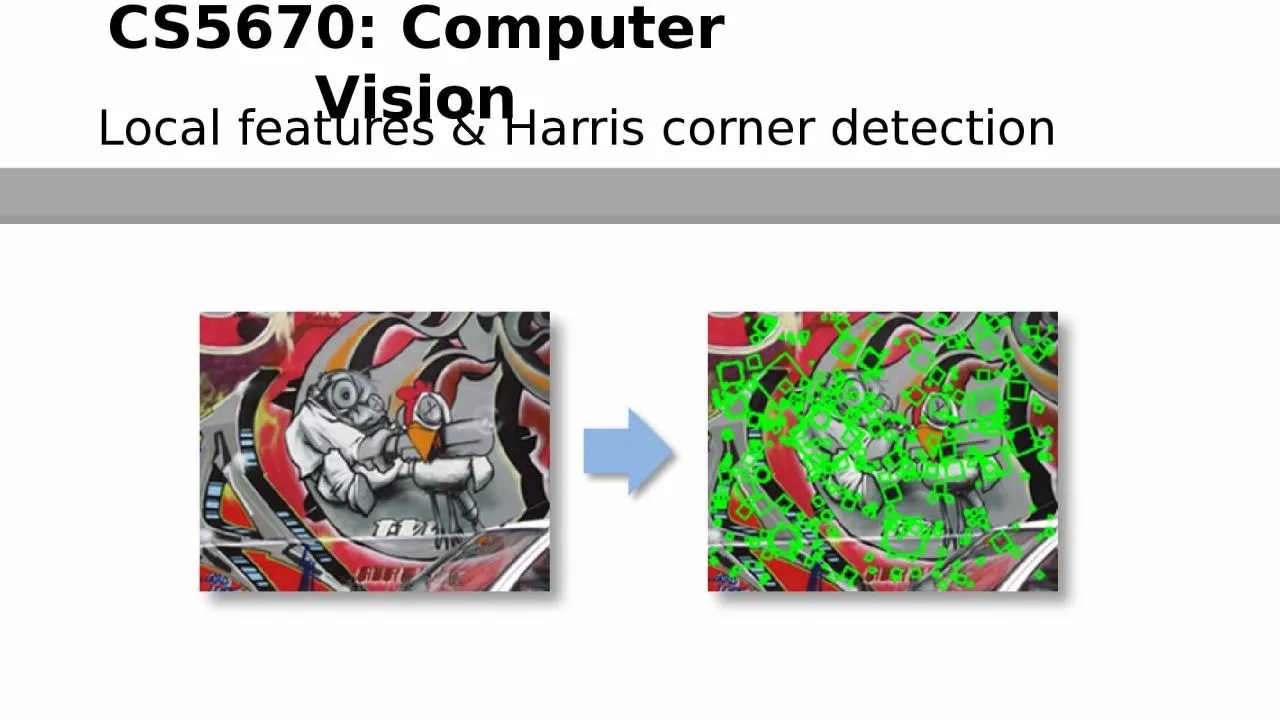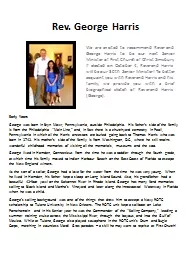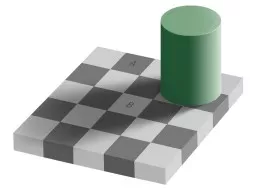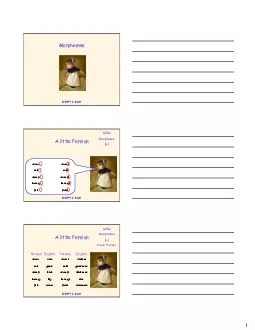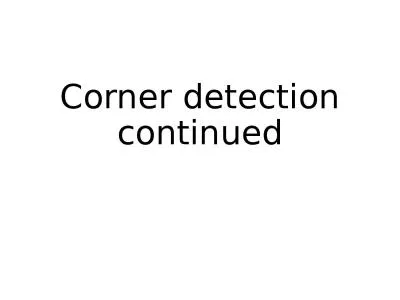PPT-Local features & Harris corner detection
Author : rodriguez | Published Date : 2023-09-22
CS5670 Computer Vision Announcements Project 1 code due Thursday 225 at 1159pm Turnin via Github Classroom Project 1 artifact due Monday 31 at 1159pm Quiz this
Presentation Embed Code
Download Presentation
Download Presentation The PPT/PDF document "Local features & Harris corner detec..." is the property of its rightful owner. Permission is granted to download and print the materials on this website for personal, non-commercial use only, and to display it on your personal computer provided you do not modify the materials and that you retain all copyright notices contained in the materials. By downloading content from our website, you accept the terms of this agreement.
Local features & Harris corner detection: Transcript
Download Rules Of Document
"Local features & Harris corner detection"The content belongs to its owner. You may download and print it for personal use, without modification, and keep all copyright notices. By downloading, you agree to these terms.
Related Documents

